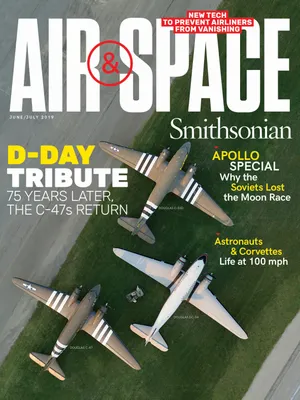Ideas That Defy: The Garage Flyer
Autogiro Company of America’s AC-35
/https://tf-cmsv2-smithsonianmag-media.s3.amazonaws.com/filer/89/b6/89b69115-4220-4a6c-aa8d-00edf5f7ac37/27a_jj2019_nasm2014-03735_live.jpg)
“They will deliver far places from loneliness,” wrote Juan de la Cierva of his invention, the autogiro, “and make near neighbors of the communities of a continent.” Cierva’s concept, intended to enable steady flight at low speed, used a powered propeller like an airplane, but added lift with unpowered, windmilling blades. At the close of the 1920s, Cierva sold licensing rights to Philadelphia aircraft designer Harold Pitcairn, who formed what would become the Autogiro Company of America. For refinements that made Cierva’s invention into a practical aircraft, Pitcairn won the 1930 Collier Trophy.
Starting in 1935, the Bureau of Air Commerce contracted with six firms to build prototype airplanes aimed at consumers. The fabric-and-steel-tube AC-35 had rotor blades that could be folded back along the fuselage for parking in a compact 24- by seven-foot space, prompting the manufacturer to promise “an aircraft in every garage.” The AC-35 was not just airworthy but “roadable”—and useful. In the 1940s, Pitcairn test pilot James Ray “borrowed” the AC-35 and flew it as his personal aircraft in Arizona to hunt coyotes, among other things. Added lift from its rotors allowed it to take off in as little as 173 feet. World War II and a Depression-era price tag of $12,500—about $225,000 today—kept the AC-35 from taking flight with consumers. Still, its sophisticated control systems benefitted the fast-developing helicopter, which rendered the autogiro little more than an interesting signpost on the road of progress.
